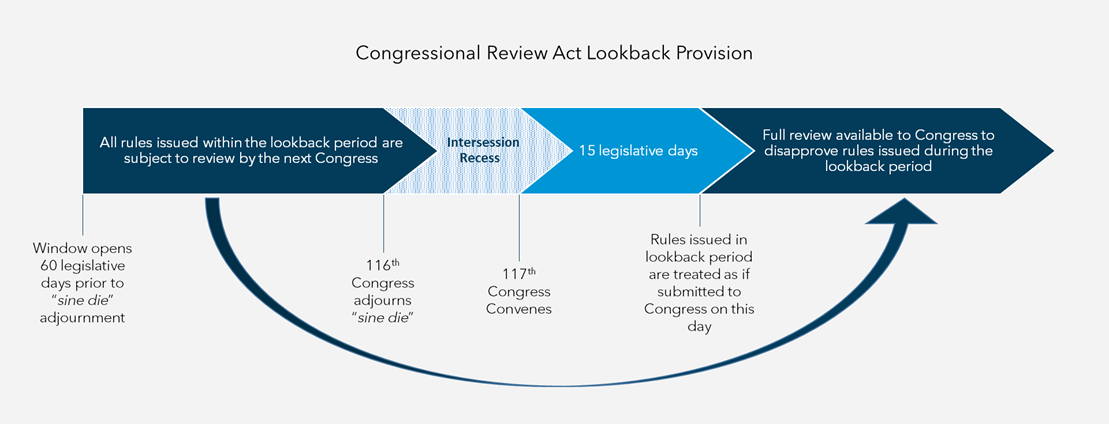Download this Commentary (PDF)
In brief...
The House calendar is set, we think, and based on procedures within the Congressional Review Act all regulations issued since August 11, 2020 may be undone by the new Congress when it convenes in January.
Based on the latest House calendar, August 11, 2020 is the earliest date that the window would open for the upcoming Congress to exercise expedited oversight of Trump administration regulations using the Congressional Review Act (CRA). This means that the incoming 117th Congress, will be able to use fast-track procedures to eliminate any regulation issued by agencies after this date. This is still only an estimate until the final House calendar is released. However, the window for review will likely begin sometime later in August given that the House historically has convened at least twice during its last week of session—which may be even more likely given President Trump’s recent threat to veto the current version of the Coronavirus Relief Bill.
Widespread use of the CRA may depend on the outcome of the Georgia Senate runoffs—which could allow Democrats to control the Senate. However, regardless of the outcome, Democrats would only need 1 or 2 Republican votes to disapprove Trump administration rules.
The Congressional Review Act
Congress enacted the CRA on March 29, 1996 to enhance congressional oversight of federal agency rulemaking. The law provides Congress with a mechanism for disapproving (i.e., eliminating) final rules issued by federal agencies. Only a simple majority vote is required in both houses to pass a disapproval. Additional “fast track” procedures, such as disallowing amendments and limiting floor debate to 10 hours, also prevent such resolutions from being filibustered in the Senate. These procedures also make it such that it only takes 30 Senators to make a non-debatable motion to move the disapproval to the floor.
Most interestingly, the CRA’s lookback provision allows a subsequent session of Congress to disapprove any rules issued by agencies during the final 60 working days of the previous Congress.[1]

[1] 5 U.S.C. § 801(d). Due to differences in how the House and Senate count their chambers’ working days—legislative days and session days, respectively—the CRA stipulates that the window for rules included in the lookback period is calculated using whichever count grants the longest time for review.

